Healing from Emotional Flatness with Sensory Rituals
Introduction
When you live with emotional flatness—whether due to depression, trauma, chronic illness like multiple sclerosis (MS), or long-term stress—it can feel like you’re surviving life in grayscale. The highs and lows are muted. Joy feels distant. Even sadness may feel numb. You’re not exactly in pain, but you’re not really living either.
This emotional state is called anhedonia or emotional blunting, and it’s more than just a mood. It’s a neurological and psychological state where pleasure, connection, and vitality become hard to access. But you are not broken. And you are not alone.
One path to gently rekindling feeling, aliveness, and inner connection is through sensory rituals—intentional, slow moments designed to stimulate and soothe the senses. They bypass logic and language, reaching you at a level below thought. These small, sensory-driven experiences can slowly bring color back into your internal world.
This article explores what emotional flatness really is, how it forms, and how simple daily sensory rituals can support your journey back to presence, pleasure, and emotional depth.
Looking for online therapy? Click here.
🌫️ What Is Emotional Flatness?
Emotional flatness (or affective blunting) is characterized by:
- A reduction in emotional expression
- A loss of interest or pleasure in things once enjoyed
- A sense of emotional numbness, detachment, or emptiness
- Feeling like you're just “going through the motions”
You may find it hard to:
- Laugh at things that used to make you smile
- Cry, even when something tragic happens
- Connect deeply with others
- Feel motivation, even for self-care or things you intellectually know are important
🧠 Causes of Emotional Flatness

There are many overlapping reasons you may experience this state:
1. Neurological Conditions
MS, Parkinson’s, and other brain conditions can affect areas responsible for emotional processing, especially if there are lesions in the frontal lobes or limbic system.
2. Depression or Anhedonia
Anhedonia—the inability to feel pleasure—is a core symptom of major depression. Even without sadness, a persistent lack of joy can signal a depressive episode.
3. Trauma or Shutdown
The nervous system sometimes goes into a freeze or dorsal vagal state when overwhelmed. This survival state prioritizes numbness to avoid overwhelm.
4. Medication Side Effects
Certain antidepressants, especially SSRIs, can cause emotional blunting as a side effect.
5. Burnout and Chronic Stress
When your body and mind are exhausted, emotional responsiveness gets flattened as a protective mechanism.
🔄 Why Sensory Rituals Can Help
Emotional flatness often happens below the level of cognition. That’s why rational self-talk, journaling, or trying to “think positive” often doesn’t work.
Instead, sensory rituals:
- Bypass the mind and speak directly to the body
- Stimulate pleasure pathways through scent, touch, taste, sound, and sight
- Help regulate the nervous system
- Reconnect you with your environment and body
- Build moments of safety, beauty, and self-presence
When practiced consistently, these small sensory touches can gradually thaw emotional numbness, helping you reconnect with the richness of life—even if only for a moment.
🧘 The Science of Sensory Stimulation and Healing
Neuroplasticity
The brain can rewire itself in response to experience. Sensory rituals offer repeated signals of safety and interest, encouraging the brain to re-engage reward circuits over time.
Polyvagal Theory
According to Dr. Stephen Porges, sensory input like soothing sounds, warm touch, and gentle light can help shift the body out of a freeze state and into a more socially engaged, calm state.
Somatic Awareness
Sensory practices ground you in the present moment, increasing body awareness and reconnecting you with subtle emotional cues—like a twinge of gratitude or a flicker of curiosity.
🔑 Principles for Sensory Rituals
Before diving into specific ideas, a few mindset shifts will help:
- No pressure to “feel” anything. Just notice.
- Consistency matters more than intensity.
- Choose one or two senses to start with.
- Focus on slowness, intention, and presence.
- Let these moments be gentle invitations, not forced tasks.
🕯️ Sensory Ritual Ideas to Heal Emotional Flatness
Here are ideas for each sense—mix and match based on your energy, space, and what feels nourishing.
👃 Smell: Awakening the Olfactory Pathways
Scent connects directly to the limbic system, the brain’s emotional center.
Rituals:
- Light a naturally scented candle while breathing deeply
- Inhale essential oils like orange (uplifting) or lavender (soothing)
- Open a jar of coffee beans, rosemary, or fresh herbs and inhale slowly
- Place a few drops of essential oil on your pillow before bed
Even one deep breath of a favorite smell can create a micro-moment of presence.
👂 Sound: Calming or Uplifting the Nervous System
Sound can regulate the vagus nerve and shift you into a state of calm alertness.
Rituals:
- Listen to binaural beats or 432Hz music with headphones
- Play a single favorite song and let it wash over you
- Sit outside and listen to birds, wind, or rain
- Use a white noise or sound bath app during rest breaks
Try humming or chanting gently—this vibrates the vagus nerve and grounds the body.
👁️ Sight: Reconnecting with Beauty and Color
Visual input influences mood, focus, and even hormonal rhythms.
Rituals:
- Light a candle in a dark room and watch the flame
- Spend 60 seconds gazing at something beautiful (a plant, painting, the sky)
- Arrange a small visual altar with objects that inspire you
- Watch sunrise or sunset through a window
You don’t have to feel beauty for it to have an effect. Just let your eyes absorb it.
👅 Taste: Inviting Micro-Moments of Pleasure
Even a small flavor can create a moment of curiosity or delight.
Rituals:
- Sip herbal tea slowly, noticing each flavor note
- Let a piece of chocolate melt on your tongue with eyes closed
- Try a new fruit or spice and observe your reaction
- Cook or plate food in a way that feels sacred or artistic
Eating becomes a healing act when you slow down and truly taste.
✋ Touch: Coming Back to the Body
Safe, gentle touch releases oxytocin and reinforces the message: “I am safe. I am here.”
Rituals:
- Massage your hands or feet with warm oil
- Place one hand on your chest or belly and breathe
- Run your fingers over different textures (stone, silk, leaves)
- Use a weighted blanket or warm bath to self-soothe
Self-touch is a powerful practice for reclaiming your sense of being alive in your own skin.
🌅 Create a Morning or Evening Sensory Practice

Structure supports consistency. A 5–15 minute daily sensory practice can gently reawaken your internal world.
Sample Morning Practice (10 minutes)
Light a candle and take 3 deep breaths
Inhale lavender oil
Sip warm tea slowly
Play soft instrumental music
Run warm water over your hands for 30 seconds
Sample Evening Practice (15 minutes)
Use body oil or lotion before bed
Listen to rain sounds with the lights low
Dim the lights and light a single lamp or string lights
Journal one sensory moment you noticed today
Close with a hand-over-heart breath
🌱 What If You Still Feel Nothing?
That’s okay. Healing emotional flatness is not about forcing emotions—it’s about building capacity for sensation and presence, even in tiny amounts.
You may notice:
- A brief spark of curiosity
- A single memory or emotion surfacing
- A sense of warmth or grounding, even without “feeling”
These are signs that your nervous system is beginning to trust safety again.
🧘 Sensory Rituals and MS
For people with multiple sclerosis, emotional flatness can result from:
- Lesions in mood-regulating brain areas
- Fatigue blunting emotional responsiveness
- Side effects of medications
- Long-term stress and coping fatigue
Sensory rituals can be tailored to accommodate:
- Limited mobility (e.g., hand massage, seated breathwork)
- Heat sensitivity (e.g., cooling eye masks instead of warm)
- Fatigue (very short 2–3 minute rituals)
They also offer a way to create predictable soothing touchpoints in a world that often feels out of control.
🌀 Healing Is Nonlinear
You might feel connected one day and flat the next. This is normal. Emotional flatness lifts gradually, and not always permanently. But each ritual builds your inner scaffolding for resilience.
You are gently reminding your nervous system:
- There is still beauty in the world.
- It is safe to feel.
- You can come back to yourself.
🧡 Final Thoughts
Emotional flatness may make you feel disconnected, robotic, or lost. But there is a quiet, powerful path back to presence: through your senses.
You don’t have to think your way out. You can breathe, touch, taste, see, and listen your way home—one slow, sacred moment at a time.
These rituals are not about forcing happiness. They are about making space for life to return—on its own terms, in its own timing.
Start small. Be gentle. And trust that even when you feel nothing, something is waking up.
Looking for online therapy? Click here.
📚 References
Porges, Stephen. The Polyvagal Theory: Neurophysiological Foundations of Emotions, Attachment, Communication, and Self-Regulation.
Cozolino, Louis. The Neuroscience of Psychotherapy: Healing the Social Brain.
American Psychological Association. Anhedonia and Emotional Blunting. www.apa.org
National Multiple Sclerosis Society. Depression and MS. www.nationalmssociety.org
Siegel, Daniel J. The Pocket Guide to Interpersonal Neurobiology.
Related Posts
-

Learning to Feel Safe in Your Body Again
If your body no longer feels like a safe place—due to trauma, chronic illness, or anxiety—you’re not alone. This guide offers gentle, body-based strategies to help you reconnect with yourself, regulate your nervous system, and rebuild trust in your physical experience.
-

When You Feel Emotionally Unlovable: Challenging the Lie
Feeling unlovable because of your emotions, illness, or sensitivity? You’re not broken—you’re healing. Learn how to challenge the lie of emotional unworthiness and rebuild self-trust, one compassionate step at a time.
-
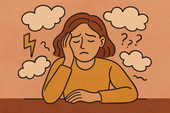
Brain Fog and Fatigue: How to Stop Blaming Yourself
Struggling with brain fog or chronic fatigue? You’re not lazy or failing. Learn how to stop blaming yourself for symptoms caused by MS or chronic illness, and start embracing a more compassionate path to healing and self-understanding.
-

Creating an Emotional Support Team You Actually Trust
Tired of feeling unsupported or misunderstood? Learn how to build an emotional support team you actually trust—with people who see you, hold space for you, and respect your boundaries, especially when living with MS or chronic illness.
-
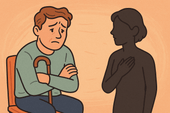
MS, Vulnerability, and the Fear of Being Seen
Living with MS can make vulnerability feel unsafe. Learn why so many people with MS hide their struggles—and how to gently move toward authenticity, self-acceptance, and deeper connection without shame.
-
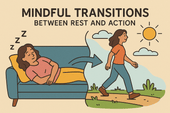
Mindful Transitions Between Rest and Action
Struggling to shift between rest and activity without guilt or overwhelm? This guide offers gentle, mindful strategies to make transitions feel more natural, intentional, and supportive of your nervous system.
-
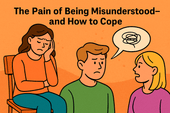
The Pain of Being Misunderstood—And How to Cope
Feeling the sting of being misunderstood? Learn why it hurts so deeply and discover practical, healing strategies to protect your truth, communicate clearly, and rebuild emotional safety when others just don’t get it.
-
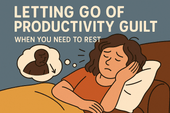
Letting Go of Productivity Guilt When You Need to Rest
Struggling with guilt every time you try to rest? Learn how to release productivity shame, understand why rest matters, and embrace a more compassionate rhythm for healing and recovery—without feeling lazy.
-
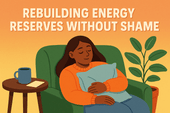
Rebuilding Energy Reserves Without Shame
-

What to Do If You Feel Emotionally Invalidated by Doctors
Feeling emotionally invalidated by your doctor can be deeply distressing. Learn how to recognize medical gaslighting, validate your own experience, and advocate for better care when you’re not being heard.
-

How to Rest Without Feeling Lazy
Rest isn’t laziness—it’s a necessary act of self-respect. Learn how to shift your mindset, let go of guilt, and embrace rest as a vital part of mental and physical well-being.
-
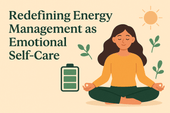
Redefining Energy Management as Emotional Self-Care
Energy isn’t just physical—it’s emotional. Learn how redefining energy management as emotional self-care can help you protect your peace, support your nervous system, and live more in tune with your true needs.
-
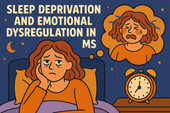
Sleep Deprivation and Emotional Dysregulation in MS
-
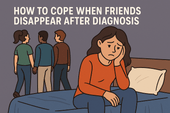
How to Cope When Friends Disappear After Diagnosis
Losing friends after a diagnosis can feel like another kind of grief. Discover why some friends disappear—and how to cope with the emotional fallout while building more supportive relationships.
-

How to Talk to Your Kids About MS Without Overwhelming Them
Struggling with how to explain MS to your kids? Learn how to talk to children of all ages about multiple sclerosis with honesty, clarity, and emotional safety—without overwhelming them.
-
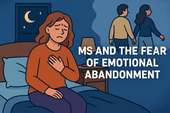
MS and the Fear of Emotional Abandonment
The fear of emotional abandonment is common for people with MS. This article explores why it happens, how it impacts your relationships, and how to create emotional safety and healing.
-
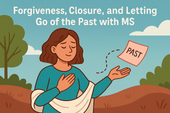
Forgiveness, Closure, and Letting Go of the Past with MS
Living with MS often brings emotional wounds from the past. Learn how forgiveness, closure, and letting go can help you heal emotionally—and reclaim peace in the present.
-
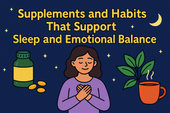
Supplements and Habits That Support Sleep and Emotional Balance
Struggling with poor sleep and emotional ups and downs? Discover calming supplements and daily habits that support deep rest and mental well-being—backed by science and easy to implement.
-
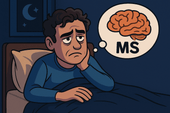
When Insomnia Feels Like Your MS Brain Won’t Turn Off
Struggling to sleep with MS? When your brain won’t shut off at night, insomnia feels relentless. Learn what causes it—and discover science-backed strategies to calm your mind and finally rest.
-

The Emotional Toll of Waking Up Tired Every Day: Why It Hurts More Than You Think
Waking up tired every day takes a deep emotional toll—from mood swings to lost motivation and self-doubt. Learn why chronic fatigue hurts more than you think and how to gently reclaim your mornings.
-
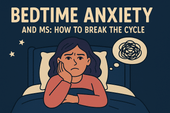
Bedtime Anxiety and MS: How to Break the Cycle
Bedtime anxiety is a common struggle for people with MS—and it’s more than just racing thoughts. Learn how MS-related stress, nervous system dysregulation, and fear of symptoms can create a cycle of sleeplessness, and discover practical, calming strategies to finally reclaim restful nights.
-

How Mental Health Affects Sleep Quality in MS: Breaking the Cycle of Fatigue and Emotional Distress
Struggling to sleep when you have MS? Discover how anxiety, depression, and neurological changes impact your rest—and what you can do to reclaim it. From CBT-I and calming supplements to lifestyle tips that support both mental health and sleep, this guide offers practical strategies for better nights.
-

Learning to Love Your Life (Even When It’s Not What You Expected)
Your life may not look how you imagined—but it’s still worth loving. Learn how to find peace, purpose, and joy in the unexpected.
-
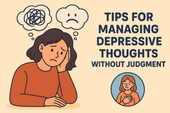
Tips for Managing Depressive Thoughts Without Judgment
Learn how to meet depressive thoughts with compassion, not shame. These gentle, research-backed tools help you manage low moods without self-judgment.
-
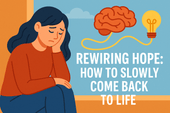
Rewiring Hope: How to Slowly Come Back to Life
Feeling emotionally numb or disconnected? Learn how to gently rebuild hope, one small sensory step and spark of life at a time.
-

Depression and Suicidality in MS: A Conversation That Needs to Happen
Depression and suicidality in MS are real—and urgent. Learn why we must talk about it, how to spot warning signs, and where to find help and hope.
-

Finding Meaning When Life Feels Empty
Feeling disconnected or numb? Discover gentle ways to find meaning again—even in emptiness—through daily rituals, reflection, and purpose.
-
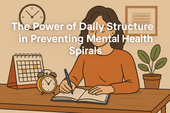
The Power of Daily Structure in Preventing Mental Health Spirals
Daily structure can prevent mental health spirals by creating safety, routine, and self-trust—especially for those with MS, depression, or anxiety.
-
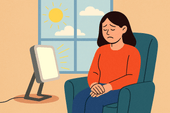
The Role of Light Therapy for Seasonal Depression and MS
Can light therapy ease seasonal depression in people with MS? Discover the science, benefits, and how to use it safely for better mood and energy.
-
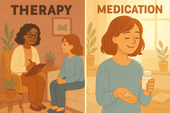
Medication vs Therapy: Treating MS-Related Depression Effectively
Explore whether therapy, medication, or both are best for treating MS-related depression. Understand what works, when—and why combination care is often ideal.
-

How to Support a Partner with MS and Depression
Learn how to support a partner living with MS and depression—practical tips, emotional tools, and ways to protect your own mental health too.
-

The Emotional Cost of Losing Your Old Life
Losing your old life to MS isn’t just about physical symptoms—it’s about grieving the identity, dreams, and freedom you once had. This article explores the emotional toll of invisible grief and how to begin healing without denying the pain.
-
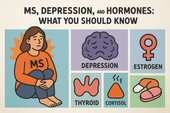
MS, Depression, and Hormones: What You Should Know
MS-related depression isn’t always just emotional—it can be hormonal. Discover how thyroid, sex, and stress hormones influence mood in MS, why women may feel worse during PMS or menopause, and what signs to look for when hormones may be driving emotional instability.
-

MS and Anhedonia: Reclaiming Pleasure One Step at a Time
Anhedonia—feeling emotionally flat or disconnected—is a common but misunderstood symptom of MS depression. This article explores how neuroinflammation, dopamine disruption, and fatigue can dull your sense of joy—and how small, gentle steps can help you begin to feel again.
-
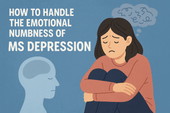
How to Handle the Emotional Numbness of MS Depression
Emotional numbness in MS depression doesn’t always look like sadness—it can feel like nothing at all. Learn why this disconnection happens, how it's tied to neuroinflammation and nervous system overload, and discover science-backed strategies to gently reconnect with your emotions.
-

How Inflammation Can Affect Mood in MS
Mood swings and emotional numbness in MS aren’t just psychological—they can be driven by immune system inflammation. This article explores how inflammatory cytokines affect the brain, why mood changes are often biological, and what you can do to calm your nervous system from the inside out.
-
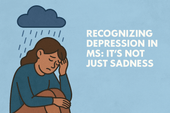
Recognizing Depression in MS: It's Not Just Sadness
Depression in multiple sclerosis (MS) is more than just sadness—it can be a neurological symptom, a side effect of inflammation, or a silent weight that masks itself as fatigue or emotional numbness. This article helps you recognize the hidden signs of MS-related depression, understand the science behind it, and explore real treatment options that support both mental and physical health.
-

Is Cryotherapy Safe for MS? Pros, Cons, and How It Compares to Cold Plunges
Cryotherapy promises quick recovery, inflammation reduction, and mood support—but is it safe for people with MS? This article breaks down the science, risks, and real-life benefits of cryotherapy for multiple sclerosis. You’ll also learn how it compares to cold plunges and which option may be better for calming flares and regulating your nervous system.
-

Can Cold Plunges Help Reduce Inflammatory Flares in MS?
Flares in multiple sclerosis (MS) are often driven by inflammation—but what if cold water could help turn down the heat? This in-depth article explores how cold plunges may help reduce flare frequency and intensity in MS by calming the immune system, lowering pro-inflammatory cytokines, and regulating the nervous system. Learn how to safely use cold exposure as part of your MS recovery routine.
-

How Cold Exposure May Help Regulate MS-Related Mood Swings
Mood swings are a common but overlooked challenge in multiple sclerosis (MS). This article explores how cold exposure—like cold plunges and showers—may help regulate emotional ups and downs by calming the nervous system, reducing inflammation, and boosting mood-enhancing chemicals. Learn how to use this natural tool safely to support your mental and emotional resilience with MS.
-

MS Fatigue Toolkit: Why Cold Plunges Deserve a Spot in Your Daily Routine
Fatigue is one of the most debilitating symptoms of multiple sclerosis (MS)—often invisible, misunderstood, and overwhelming. While no single tool can eliminate it, building a personalized fatigue management toolkit can make life more manageable. One surprising contender? Cold plunges. In this article, we explore why cold water immersion might be the refresh button your nervous system needs—and how to safely make it part of your MS fatigue routine.
-
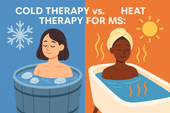
Cold Therapy vs. Heat Therapy for MS: Which One Helps More?
Managing multiple sclerosis (MS) often means navigating symptoms like fatigue, spasticity, pain, and nerve dysfunction. But when it comes to using temperature-based therapies, there’s a question many patients face: Should I be using cold or heat? In this in-depth guide, we explore the benefits, risks, and best use cases of cold therapy vs. heat therapy for MS.
-

From the Tub to the Brain: How Cold Plunges Might Support Cognitive Clarity in MS
Cognitive fog is one of the most frustrating symptoms of multiple sclerosis (MS). But could cold plunges—those bracing dips into icy water—offer a surprising path to mental clarity? This article explores the emerging science behind cold exposure, brain function, and how a cold tub might help people with MS sharpen focus, lift brain fog, and reset their nervous system.
-

Why MS Patients Are Turning to Cold Plunges for Relief and Resilience
Cold plunges are no longer just for elite athletes and wellness influencers. A growing number of people with multiple sclerosis (MS) are turning to cold water immersion to ease symptoms, build nervous system resilience, and find calm in the chaos of chronic illness. This article explores why—and how—you might want to give it a try.
-

Cold Plunge Therapy: A Hidden Gem for People with MS?
Cold plunge therapy—once the domain of elite athletes and biohackers—is gaining attention among people with multiple sclerosis (MS). Could it help reduce inflammation, calm the nervous system, and ease MS symptoms like fatigue and spasticity? In this article, we dive deep into the science, benefits, safety, and practical application of cold plunges for MS recovery and symptom relief.
-
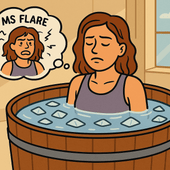
Finding Relief in the Midst of a Flare
MS flares can leave you feeling overwhelmed, exhausted, and mentally foggy. Cold water therapy is emerging as a promising tool to help reset the body and mind after a flare. This article explores how cold exposure supports recovery, calms the nervous system, and can be safely added to your daily routine.
-

How Cold Exposure May Help Regulate MS-Related Mood Swings
Mood swings in multiple sclerosis (MS) can feel like emotional whiplash—one moment calm, the next overwhelmed, angry, or hopeless. While medications and therapy help, many people with MS are exploring natural strategies to support emotional balance. One surprising tool gaining attention? Cold exposure. In this article, we explore how cold plunges and other forms of cold therapy may regulate the nervous system, stabilize mood, and offer emotional relief for people with MS.
-
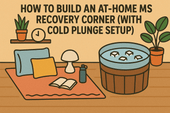
How to Build an At-Home MS Recovery Corner (with Cold Plunge Setup)
Create your personal MS recovery oasis at home—complete with a cold plunge setup. Learn how to design a space that supports healing, reduces inflammation, and helps you manage symptoms naturally.
-

The Role of Temperature Regulation in MS: Why Cooling Matters

















































